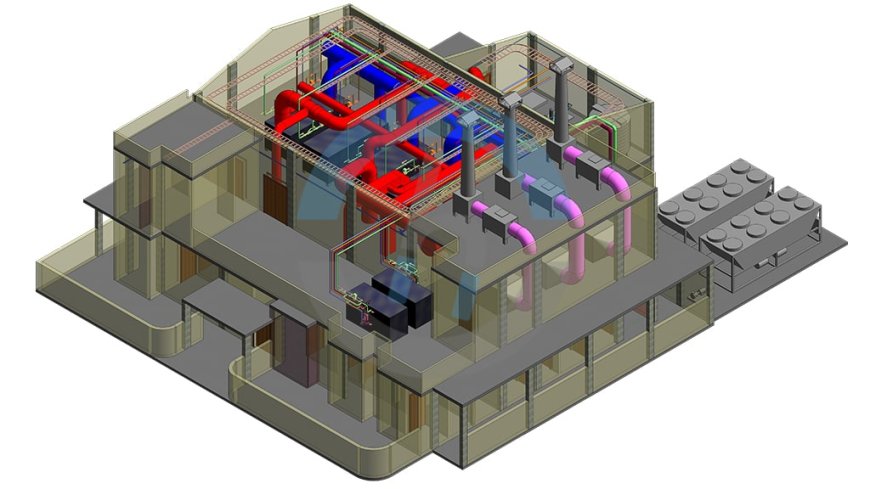Exploring MEP Plans in Construction
Discover the benefits of MEP plans in construction and enhance your understanding of this crucial aspect. Explore our website for comprehensive insights.

As may be the construction industry, the MEP (Mechanical, Electrical, and Plumbing) plan is in a sense that of building both efficiency and functionality.
These construction plans include detailed technical drawings and specifications for the main mechanical, electrical, and plumbing systems. It outlines the whole procedure to make sure that the standards and regulations are met.
The subject of this architecture article is MEP plans in construction, and we will look into them, revealing their importance, their main elements, the planning process, and so on.
Understanding MEP Plans
The MEP plans in a nutshell are detailed documents encompassing interior arrangements including layout, types, and qualities of mechanical, electric, and plumbing systems within a structure. They are the bible for the contractors and engineers who build the systems and describe the mechanism of HVAC, electrical network, water supply, and other needed components in detail.
Key Components of MEP Plans
Mechanical Systems: Such covers describe configurations and specifications of the HVAC (heat, ventilation, and air conditioning) systems installed, guaranteeing airflow, temperature and indoor air quality.
Electrical Systems: MEP designs will consist of drawings and schematics highlighting electrical layouts which will point out the outlet location, switch, and general lighting placement with their connection to the main electricity source.
Plumbing Systems: The piping plans specify the positioning of the sanitary and water supply networks, the drainage system and the location of fixtures, with the proximate objective of maximizing the flow rate, eliminating the backflow and controlling the water conservation within the building.
Importance of MEP Plans
MEP plans are crucial for several reasons:
Compliance: They make the building safe by enforcing compliance with local ordinances and mechanical, electrical, and plumbing codes while also ensuring that the equipment functions correctly.
Coordination: Collaboration between different teams and subcontractors that are part of the building project is made simpler thanks to MEP plans. It prevents any interruption in combining diverse systems that are based on the same plan.
Efficiency: Extremely performed MEP plans are purposely formed in such a way that the building systems are performing very easily, leading to energy efficiency, reduced operational costs, and better living standards among the occupants.
Creating Effective MEP Plans
Creating competent MEP (Mechanical, Electrical, and Plumbing) examinations requires coordination, specializations, and attention to detail. The following steps are involved in creating MEP plans: The following steps are involved in creating MEP plans:
Needs Assessment: Carry out an in-depth analysis of the building's current needs, taking into account aspects like occupancy, buildings’ function, and environmental conditions as a guide to produce the most suitable design for mechanical, electrical, and plumbing systems.
Collaborative Design: Encourage open discussions among architects, engineers, contractors and other stakeholders to draft MEP plans which eventually settle with goals, budget and schedule of the project.
Integration of Technologies: Integrate innovation technologies and sustainable practices into energy plans, to increase performance, reliability, and the overall energy efficiency by considering renewable energy systems, smart controls, and low-flow fixtures as a few of them.
Challenges in MEP Planning
Despite their importance, MEP planning can pose several challenges:
Complexity: Converting the building into an integrated system that controls several systems almost simultaneously necessitates the provision of well-articulated plans by experts who will find the systems compatible, they will work and also follow all prescribed regulations.
Space Constraints: The restriction of room in buildings can lead to some difficulties in arranging the MEP systems without interfering in any of the other architectural elements, resulting in the need for creative engineering solutions as well as optimization strategies.
Conclusion
Mechanical, Electrical, and Plumbing (MEP) plans are critical plans that direct the apparition, installation, and operation of mechanical, electrical, and plumbing systems in the construction processes. Recognizing the MEP plans importance and dealing with their challenges will help to reach the project’s purposes, to do it safely, and efficiently, and to be fully sustainable.







